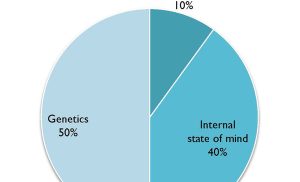The Balanced Leader: Mindful Strategies For Management
Do you ever feel overwhelmed with the demands of being a leader? In our fast-paced and often chaotic working environments, it can be challenging to maintain a sense of balance and effectively manage teams. That’s why “The Balanced Leader: Mindful Strategies for Management” offers valuable insights and practical techniques to help you navigate the complexities of leadership. This article will explore the importance of mindfulness in leadership, providing you with the tools you need to enhance your management skills and create a harmonious work environment.
The Importance of a Balanced Leader
Being a leader is not just about making decisions and giving orders. It requires a unique set of skills and qualities, one of which is balance. A balanced leader understands the need to harmonize different aspects of their role, including their own emotions and the needs of their team. In this article, we will explore the importance of a balanced leader, why self-awareness and emotional intelligence are crucial, how effective communication skills contribute to leadership success, the role of a positive work environment, strategies for time and stress management, the power of leading by example, adapting to change and overcoming challenges, promoting a growth mindset, and the significance of developing and empowering others.
The Role of a Balanced Leader in Management
In management, a balanced leader plays a vital role in guiding and inspiring their team towards success. They are able to make decisions that take into account not only the bottom line but also the well-being of their employees. By understanding the importance of balance, a leader can create an environment where productivity and employee satisfaction go hand in hand. A balanced leader recognizes that their role is not just about achieving targets and meeting deadlines, but also about fostering collaboration and promoting a positive work culture.
Benefits of a Balanced Leader
A balanced leader brings numerous benefits to the table. Firstly, they can effectively manage conflict by remaining calm and composed in challenging situations. This allows them to find amicable solutions and ensure that everyone’s opinions are heard and considered. Secondly, a balanced leader is adept at decision-making, weighing the pros and cons of various options and making choices that are fair and reasonable. This inspires confidence and trust among team members, leading to increased morale and motivation. Finally, a balanced leader has the ability to adapt to change and overcome challenges with resilience, which is crucial in today’s rapidly evolving business landscape.
Understanding Self-Awareness
Self-awareness forms the foundation of a balanced leader. It involves having a deep understanding of one’s emotions, strengths, weaknesses, and values. By being aware of their own emotional state, a leader can effectively manage their reactions and avoid impulsive decisions. Self-awareness also allows a leader to recognize how their actions and words impact others, fostering better relationships and communication within the team.
Developing Emotional Intelligence
Emotional intelligence is closely linked to self-awareness and is a key trait of a balanced leader. It involves being able to recognize and understand the emotions of oneself and others, and to effectively manage those emotions. A leader with high emotional intelligence can empathize with their team members, creating a supportive and inclusive work environment. They are also skilled in managing conflict and can diffuse tense situations with ease. Developing emotional intelligence involves practicing active listening, empathy, and self-control.
Practicing Self-Control and Regulation
Self-control and regulation are essential skills for a balanced leader. It involves being able to manage and control one’s own emotions and impulses, especially in high-pressure situations. By practicing self-control, a leader can avoid making decisions based on anger or frustration and instead approach challenges with a calm and rational mindset. Self-regulation also involves setting boundaries and managing stress effectively, which is crucial for maintaining a healthy work-life balance.
Active Listening and Empathy
Effective communication is a cornerstone of leadership, and active listening and empathy are key components of this. Active listening involves fully focusing on and understanding the message being conveyed by others. A balanced leader actively listens to their team members, making them feel heard and valued. Empathy goes hand in hand with active listening, as it involves understanding and sharing the emotions and perspectives of others. By practicing active listening and empathy, a leader can foster strong bonds with their team and build trust and rapport.
Clarity and Conciseness in Communication
In addition to active listening and empathy, a balanced leader understands the importance of clear and concise communication. Clarity ensures that messages are understood accurately, reducing misunderstandings and conflicts. A balanced leader is skilled in articulating their thoughts and ideas in a way that is easily understandable to their team members. They communicate with precision, avoiding unnecessary jargon or ambiguity that can lead to confusion.
Adapting Communication Styles
Every individual has a unique communication style, and a balanced leader recognizes the importance of adapting their approach to suit different personalities and situations. By being flexible in their communication style, they can ensure effective communication with each team member. This flexibility also extends to different mediums of communication, such as email, phone calls, or face-to-face interactions. Adapting communication styles helps build strong relationships and fosters a collaborative work environment.
Creating a Supportive Culture
A balanced leader understands that creating a supportive culture is essential for the success and well-being of their team. They strive to create an environment where team members feel safe, supported, and valued. This involves providing resources and opportunities for growth, acknowledging achievements, and promoting a sense of belonging. A supportive culture encourages open communication, collaboration, and innovation, leading to increased productivity and employee satisfaction.
Encouraging Team Collaboration
Collaboration is an integral aspect of a balanced leader’s management style. They recognize that when team members work together, they can leverage each other’s strengths, share knowledge, and achieve common goals more effectively. A balanced leader fosters an environment where teamwork is encouraged and recognized. They facilitate collaboration by assigning tasks that require different skill sets, promoting cross-functional projects, and providing opportunities for team members to collaborate and learn from one another.
Promoting Work-Life Balance
A balanced leader acknowledges the importance of work-life balance and actively promotes it within their team. They understand that productivity and well-being go hand in hand, and that burnout can negatively impact both. A balanced leader encourages team members to set boundaries and prioritize their personal well-being. They support initiatives such as flexible working hours, remote work options, and regular breaks to ensure that their team members have a healthy work-life balance. By promoting work-life balance, a balanced leader cultivates a motivated and engaged team.
Prioritizing Tasks and Setting Goals
Effective time and task management are crucial skills for a balanced leader. They understand that not all tasks are equal and that prioritizing is essential for productivity. By setting clear goals and prioritizing tasks accordingly, a leader can ensure that important projects are completed on time and that resources are allocated efficiently. This also helps team members understand their responsibilities and reduces the chances of feeling overwhelmed or lost.
Utilizing Time-Management Techniques
To effectively manage their time, a balanced leader utilizes various techniques and strategies. This may include techniques such as the Pomodoro Technique, where work is broken down into focused intervals, or the Eisenhower Matrix, which helps prioritize tasks based on urgency and importance. A balanced leader understands the value of time and seeks to optimize it by eliminating distractions, delegating tasks when necessary, and using tools and technologies that streamline workflows.
Managing Stress and Building Resilience
Leadership is not without its share of stress, and a balanced leader understands the importance of managing and mitigating stress. They recognize that managing stress is essential for their own well-being, as well as for the well-being of their team. A balanced leader practices stress management techniques such as mindfulness, exercise, and relaxation techniques. They also prioritize self-care and encourage their team members to do the same. Building resilience is another key aspect, as it allows leaders to bounce back from setbacks and challenges with a positive mindset.
Authenticity and Building Trust
Authentic leadership is a powerful tool for a balanced leader. Being authentic means being true to oneself and having the courage to show vulnerability. By being authentic, a leader builds trust among their team members. Trust is crucial for effective communication, collaboration, and engagement. A balanced leader understands that trust is built over time through consistent actions and open communication. They strive to create a culture of authenticity and transparency where team members feel comfortable being themselves and expressing their opinions.
Transparency and Accountability
Transparency and accountability go hand in hand with authenticity. A balanced leader understands the importance of transparency in building trust and fostering a positive work environment. They communicate openly with their team members, sharing relevant information and updates. They also hold themselves accountable for their actions and decisions and establish clear expectations for their team members. Transparency and accountability ensure that everyone is on the same page and promotes a culture of integrity and trust.
Creating a Culture of Integrity
Integrity is a fundamental quality of a balanced leader. A leader with integrity is honest, ethical, and consistent in their actions and decisions. They lead by example, setting high standards of behavior and holding themselves and others accountable. A culture of integrity cultivated by a balanced leader promotes ethical behavior, trust, and respect within the team and the organization as a whole. It helps create a positive reputation and attracts high-caliber talent.
Embracing Change and Flexibility
In today’s rapidly evolving business landscape, change is inevitable. A balanced leader understands the importance of embracing change and being flexible. They view change as an opportunity for growth and improvement rather than a threat. They help their team members adapt to change by providing support, resources, and clear communication. By embracing change and being flexible, a balanced leader inspires their team to embrace new ideas and approaches, fostering innovation and resilience.
Problem-Solving and Decision-Making
Problem-solving and decision-making are core skills of a balanced leader. They are skilled at analyzing complex situations, identifying root causes of problems, and finding practical solutions. A balanced leader involves their team members in the problem-solving process, valuing their input and leveraging their diverse perspectives. They also make decisions based on sound judgment, considering all available information and taking into account the impact on their team and the organization as a whole.
Resilience in the Face of Challenges
Challenges and setbacks are inevitable in any leadership role. A balanced leader possesses resilience, which allows them to bounce back from adversity and maintain a positive attitude. They view challenges as learning opportunities and are skilled at finding creative solutions. A balanced leader provides support and encouragement to their team members during challenging times, helping them build resilience as well. Resilience promotes a growth mindset and allows leaders and their teams to thrive in the face of adversity.
Embracing Continuous Learning
A growth mindset is a key attribute of a balanced leader. They embrace continuous learning and encourage their team members to do the same. A balanced leader understands that there is always room for improvement and that learning is a lifelong journey. They seek out opportunities for professional development, whether through workshops, courses, or networking events. By embracing continuous learning, a balanced leader fosters a culture of innovation, adaptability, and personal growth within their team.
Developing a Culture of Innovation
Innovation is essential for the long-term success of any organization, and a balanced leader plays a crucial role in fostering a culture of innovation. They encourage their team members to think outside the box, challenge the status quo, and explore new solutions. A balanced leader creates a safe and non-judgmental environment where new ideas are welcomed and encouraged. They also allocate resources and provide support for experimentation and creative projects. A culture of innovation allows teams to stay ahead of the competition and adapt to changing market demands.
Encouraging Intellectual Curiosity
Intellectual curiosity is a quality that a balanced leader cultivates within themselves and their team. It involves a genuine desire to learn, explore, and seek knowledge. A balanced leader encourages intellectual curiosity by providing opportunities for intellectual growth, such as learning lunches or book clubs. They also foster an environment where curiosity is celebrated and questions are encouraged. Intellectual curiosity leads to new discoveries, innovative ideas, and a deeper understanding of the industry, benefiting both the leader and their team.
Delegating Responsibilities and Empowering Employees
A balanced leader understands the importance of delegation and empowerment. They recognize that they can’t do it all themselves and that empowering their team members leads to better outcomes. A balanced leader delegates responsibilities based on individual strengths and provides the necessary support and resources. They trust their team members to take ownership of their work and make decisions, and they offer guidance and mentorship when needed. Delegation and empowerment not only lighten the leader’s workload but also foster growth and development within the team.
Providing Constructive Feedback and Coaching
Effective feedback and coaching are essential tools for a balanced leader. They provide timely, specific, and constructive feedback to their team members, recognizing their strengths and identifying areas for improvement. A balanced leader understands that feedback is a two-way street and actively seeks feedback from their team members as well. They also provide coaching and guidance to help their team members reach their full potential. By providing constructive feedback and coaching, a balanced leader creates an environment of continuous improvement and personal growth.
Promoting Professional Development
Promoting professional development is an important responsibility of a balanced leader. They understand that investing in their team members’ growth and development not only benefits the individuals but also contributes to the overall success of the organization. A balanced leader encourages their team members to set personal goals and supports them in achieving those goals. They provide opportunities for training, mentorship, and career advancement. Promoting professional development fosters loyalty, engagement, and a culture of continuous learning within the team.
Setting Boundaries and Prioritizing Personal Well-being
A balanced leader understands the importance of setting boundaries and prioritizing their personal well-being. They recognize that they need time for rest, relaxation, and personal interests to maintain their own physical and mental health. By setting boundaries around work hours and commitments, a leader ensures a healthy work-life balance. They also encourage their team members to do the same, leading by example and promoting a culture of self-care and well-being.
Encouraging Work-Life Integration
Work-life integration is a concept that a balanced leader promotes within their team. It involves finding ways to blend work and personal life in a way that is fulfilling and satisfying. A balanced leader encourages flexibility in work schedules, allowing team members to attend to personal commitments while still meeting work obligations. They promote a culture where work is seen as a part of life rather than a separate entity. By encouraging work-life integration, a balanced leader creates an environment where individuals can thrive both personally and professionally.
Supporting Work-Life Balance Initiatives
Finally, a balanced leader actively supports work-life balance initiatives within their organization. They work with HR teams to implement policies that prioritize employee well-being and provide resources for work-life balance. This may include initiatives such as wellness programs, flexible work arrangements, or mental health support. By actively supporting work-life balance initiatives, a balanced leader sends a clear message that the well-being of their team is a priority.
In conclusion, being a balanced leader is essential for effective management. By recognizing the need for balance, developing self-awareness and emotional intelligence, building effective communication skills, fostering a positive work environment, implementing strategies for time and stress management, leading by example, adapting to change, promoting a growth mindset, and developing and empowering others, a leader can create a harmonious and successful team. A balanced leader understands that leadership is not just about achieving targets but also about creating an environment where individuals can thrive, innovate, and reach their full potential.

















